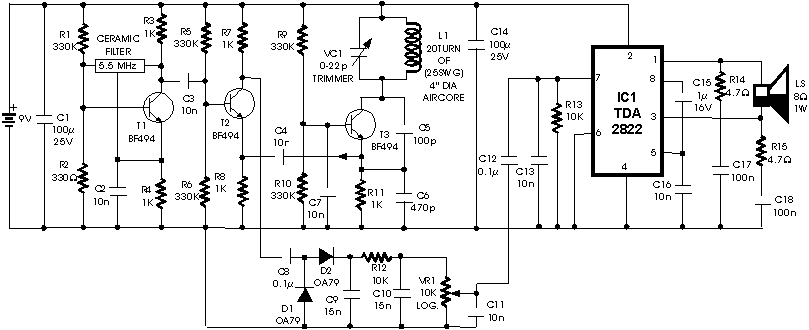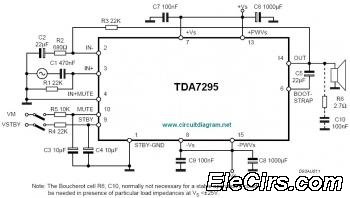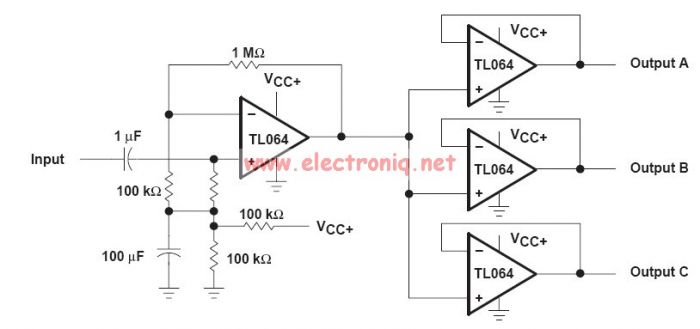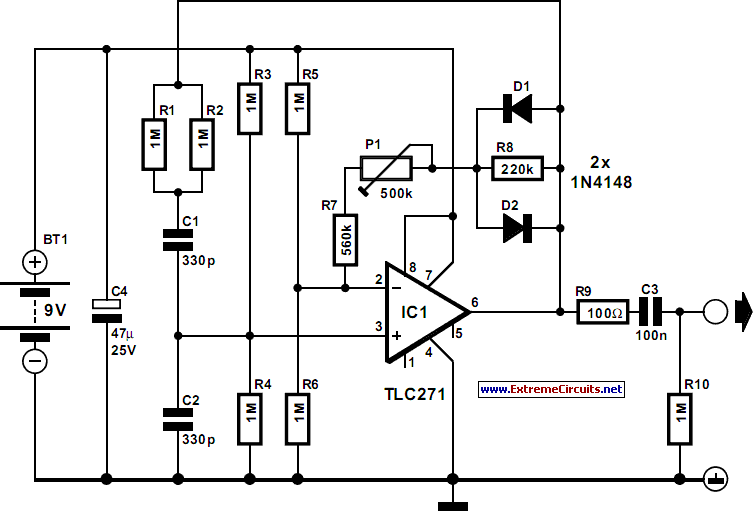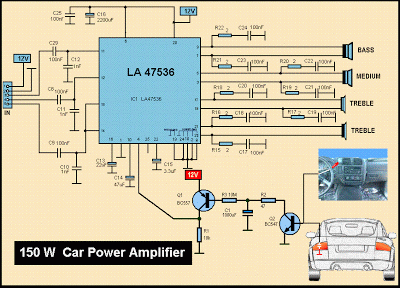
Izzy Wizzy Audio
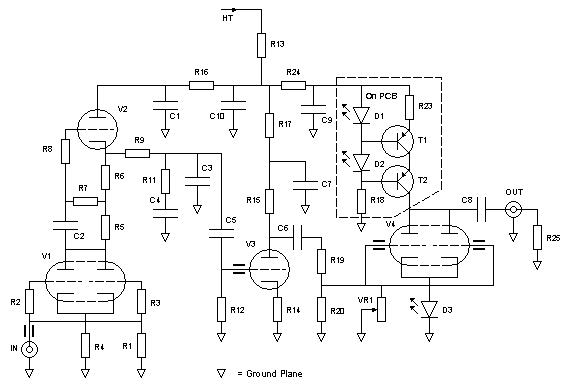
The objective was to construct a moving coil (MC) sensitive preamplifier that is quiet, utilizes only vacuum tubes, and possesses a unique quality that invites listening. This preamp operates quietly, and when assembled correctly, it is free from hum. Only a slight trace of hum or hiss is perceptible at high volume levels when the listener is very close to the speaker. Beyond achieving good sound quality, a primary design goal was to establish a solid reference. Single-ended circuits tend to transmit nearly all power supply noise, which, while not directly audible, can modulate the signal in the gain stage. A crucial part of providing a solid reference involves acquiring and maintaining a clear and relatively low impedance audio ground. The audio ground consists of a single foil conductor approximately 20mm in length, with all audio components connected directly to it using their leads—no additional wiring is employed. The circuit is depicted as it is wired. Another design intention was to rely on the components to perform their functions effectively. The aim was not to create a specific "sound," but rather to allow as much detail as possible to be heard while maximizing the connection to the musicians and conveying the musical message. This delicate balance proved challenging to articulate. Simplifying the design improved performance up to a certain extent; adding more iron or coils enhanced rhythmic aspects. Any attempts to "assist" the circuit with active current source loads or regulators tended to interfere. As the power supply improved, the necessity for such enhancements diminished. With average power supplies, these circuit modifications can be beneficial as they isolate the audio circuit from undesirable power supply artifacts. After years of utilizing dual mono supplies, it became evident that achieving a common clean ground reference was unfeasible with this method, leading to the design of a mono outboard power supply, which resulted in a more coherent sound. The transformer is rated four times higher than necessary for its intended duty, which raises questions about the necessity of choke input. Rectification is performed using high-voltage diode rectifiers, which, although not compared to other types, deliver an effortless sound quality. Small inductors in the anodes mitigate ringing tendencies during the conduction start. The choke input supply yields a rich sound, preferred over capacitor input. All transformers are equipped with grounded electrostatic screens. Modeling with Duncan's Amp PSU designer yielded promising design results, with a DC voltage of 298V modeled and measured at 301V using the 83 rectifier and choke design values. The transformer has a specification of 340-0-340 at 200mA, measuring approximately 370V with the preamp circuit load. Ripple at the power supply output was modeled at 0.5mV, and after the RCLC stage, it is approximately 20nV, significantly lower for the first stage. Achieving such low ripple figures with a regulator seems unlikely, contributing to the overall quietness and minimizing program-induced noise indicative of a poor power supply. The heater supply mirrors the topology of the high tension (HT) supply and incorporates the only solid-state component, a Schottky dual diode. The 0.1H 3A chokes effectively reduce ripple, eliminating the need for a regulator even in an MC sensitive preamp. A common mode choke helps attenuate interference from mains noise or transients caused by diode switching. The secondary also benefits from a resistor that likely dampens oscillations resulting from diode switching, although a similar setup on the HT did not yield noticeable benefits. A pivotal component in this design is the TX103 Stevens and Billington MC step-up transformer, regarded as an exceptional device, closely resembling a wire with gain. This transformer was a direct replacement for a piece of wire that had been previously used. Its superior matching and energy transfer capabilities are crucial, as past transformers have tended to obscure certain details in the audio signal.
The circuit design of the MC sensitive preamplifier emphasizes the importance of minimizing noise and achieving high fidelity in audio reproduction. The single-ended design approach, while susceptible to power supply noise, is mitigated through the careful layout of the audio ground, ensuring that all components connect directly to a low impedance reference. This design choice enhances signal integrity and reduces the potential for unwanted noise modulation.
The use of a high-rated transformer ensures adequate power delivery while minimizing the risk of saturation, which can affect audio quality. The choice of MV diode rectifiers, complemented by small inductors, addresses potential ringing issues, resulting in a smoother audio signal. The implementation of a choke input power supply further contributes to the overall sound quality by providing a more natural and dynamic audio output.
The design's reliance on a mono power supply configuration is a strategic decision aimed at achieving a coherent sound stage. By eliminating the complications associated with dual mono supplies, the circuit benefits from a unified ground reference, enhancing the clarity and spatial representation of the audio signal.
In summary, the MC sensitive preamp is engineered to prioritize sound quality and detail retrieval, achieved through a meticulous selection of components and a thoughtful circuit layout. The careful consideration of power supply design, grounding techniques, and component choices culminates in a preamplifier that delivers an engaging listening experience while remaining faithful to the original musical performance.The aim was to build a MC sensitive preamp that was quiet, used only tubes and had a certain something that made you want to listen. This thing is quiet and if built properly, hum free. I have to put my head very near the speaker to hear a slight trace of hum or hiss at loud listening levels.
The main design aim other than to make it sound good wa s to give the circuit a solid reference. Single ended circuits "pass on" virtually every bit of power supply noise. This noise may not be audible in its own right but it will modulate the signal passing through the gain stage. Part of providing a solid reference is getting and maintaining an unambiguous and relatively low impedance audio ground.
The audio ground is a single foil conductor about 20mm long. All the audio components are connected to it using their leads only - no extra wiring is used. The circuit is shown almost exactly as it is wired. Another design aim was to trust the components to do their job. "A sound" was not the aim but it was designed to allow as much as possible to be heard detail wise but also to maximise the connection to the musician(s) and allow the musical message through. This is very hard to explain and I was surprised how delicate this balance was. The simpler it got, the better it became up to a point. The more iron/coils I threw at it, the better in these terms it became especially rhythmically. Any additions to "help" the circuit such as active/CCS loads and regulators etc got in the way. As the PSU got better, the less these things were needed. If the PSU is average, then these circuit "tricks" can be used to advantage as they isolate the audio circuit from bad power supply artifacts.
After using dual mono supplies for years, it occured to me that it is impossible to provide a common clean ground reference using this approach hence the main outboard supply is mono in design. The sound seems more coherent this way. The transformer is 4x overated for the duty - whether this is needed for choke input is debateable. Rectification is by MV diode rectifiers - they were not compared to other types but are effortless in sound and look brilliant.
The small inductors in their anodes suppress their tendency to ring a bit on start of conduction. The supply is choke input which provides a big easy sound - preferred to capacitor input. All transformers have earthed electrostatic screens. Modelling using the superb Duncan`s Amp PSU designer produced the design results. The DC voltage as modelled was 298V; 301V in reality using the 83 rectifier and design values for the chokes. Note the transformer is 340-0-340 @ 200mA so measured about 370V with the load of the preamp circuit.
Ripple at the PSU output modelled at 0. 5mV. After the RCLC stage, ripple is approx 20nV and will be much less for the first stage. I can`t see any regulator achieving these figures and so contributes to the quietness and lack of program induced noise that indicates a poor power supply. The heater supply is similar in topology to the HT and contains the only solid state device, a schottky dual diode.
The 0. 1H 3A chokes decimate ripple and therefore even in an MC sensitive preamp, no regulator is required for low noise/hum. The common mode choke helps to attenuate hash and rubbish that has come in on the mains or transients caused by the diodes switching.
The secondary also benefits from a resistor which I guess damps oscillations caused by diode switching. A similar arrangement on the HT produced no discernable benefit. A key component in this design is the TX103 Stevens and Billington MC step up transformer. A superb device; the closest thing to a wire with gain I`ve heard and that is exactly what I replaced when I tried it - a piece of wire.
I`d concede it is the superiour matching and energy transfer that this allows to be crucial. All previous transformers I`ve heard have obscured something or other so straight into a high 🔗 External reference
The circuit design of the MC sensitive preamplifier emphasizes the importance of minimizing noise and achieving high fidelity in audio reproduction. The single-ended design approach, while susceptible to power supply noise, is mitigated through the careful layout of the audio ground, ensuring that all components connect directly to a low impedance reference. This design choice enhances signal integrity and reduces the potential for unwanted noise modulation.
The use of a high-rated transformer ensures adequate power delivery while minimizing the risk of saturation, which can affect audio quality. The choice of MV diode rectifiers, complemented by small inductors, addresses potential ringing issues, resulting in a smoother audio signal. The implementation of a choke input power supply further contributes to the overall sound quality by providing a more natural and dynamic audio output.
The design's reliance on a mono power supply configuration is a strategic decision aimed at achieving a coherent sound stage. By eliminating the complications associated with dual mono supplies, the circuit benefits from a unified ground reference, enhancing the clarity and spatial representation of the audio signal.
In summary, the MC sensitive preamp is engineered to prioritize sound quality and detail retrieval, achieved through a meticulous selection of components and a thoughtful circuit layout. The careful consideration of power supply design, grounding techniques, and component choices culminates in a preamplifier that delivers an engaging listening experience while remaining faithful to the original musical performance.The aim was to build a MC sensitive preamp that was quiet, used only tubes and had a certain something that made you want to listen. This thing is quiet and if built properly, hum free. I have to put my head very near the speaker to hear a slight trace of hum or hiss at loud listening levels.
The main design aim other than to make it sound good wa s to give the circuit a solid reference. Single ended circuits "pass on" virtually every bit of power supply noise. This noise may not be audible in its own right but it will modulate the signal passing through the gain stage. Part of providing a solid reference is getting and maintaining an unambiguous and relatively low impedance audio ground.
The audio ground is a single foil conductor about 20mm long. All the audio components are connected to it using their leads only - no extra wiring is used. The circuit is shown almost exactly as it is wired. Another design aim was to trust the components to do their job. "A sound" was not the aim but it was designed to allow as much as possible to be heard detail wise but also to maximise the connection to the musician(s) and allow the musical message through. This is very hard to explain and I was surprised how delicate this balance was. The simpler it got, the better it became up to a point. The more iron/coils I threw at it, the better in these terms it became especially rhythmically. Any additions to "help" the circuit such as active/CCS loads and regulators etc got in the way. As the PSU got better, the less these things were needed. If the PSU is average, then these circuit "tricks" can be used to advantage as they isolate the audio circuit from bad power supply artifacts.
After using dual mono supplies for years, it occured to me that it is impossible to provide a common clean ground reference using this approach hence the main outboard supply is mono in design. The sound seems more coherent this way. The transformer is 4x overated for the duty - whether this is needed for choke input is debateable. Rectification is by MV diode rectifiers - they were not compared to other types but are effortless in sound and look brilliant.
The small inductors in their anodes suppress their tendency to ring a bit on start of conduction. The supply is choke input which provides a big easy sound - preferred to capacitor input. All transformers have earthed electrostatic screens. Modelling using the superb Duncan`s Amp PSU designer produced the design results. The DC voltage as modelled was 298V; 301V in reality using the 83 rectifier and design values for the chokes. Note the transformer is 340-0-340 @ 200mA so measured about 370V with the load of the preamp circuit.
Ripple at the PSU output modelled at 0. 5mV. After the RCLC stage, ripple is approx 20nV and will be much less for the first stage. I can`t see any regulator achieving these figures and so contributes to the quietness and lack of program induced noise that indicates a poor power supply. The heater supply is similar in topology to the HT and contains the only solid state device, a schottky dual diode.
The 0. 1H 3A chokes decimate ripple and therefore even in an MC sensitive preamp, no regulator is required for low noise/hum. The common mode choke helps to attenuate hash and rubbish that has come in on the mains or transients caused by the diodes switching.
The secondary also benefits from a resistor which I guess damps oscillations caused by diode switching. A similar arrangement on the HT produced no discernable benefit. A key component in this design is the TX103 Stevens and Billington MC step up transformer. A superb device; the closest thing to a wire with gain I`ve heard and that is exactly what I replaced when I tried it - a piece of wire.
I`d concede it is the superiour matching and energy transfer that this allows to be crucial. All previous transformers I`ve heard have obscured something or other so straight into a high 🔗 External reference
